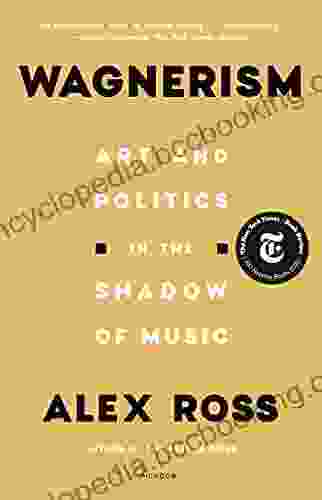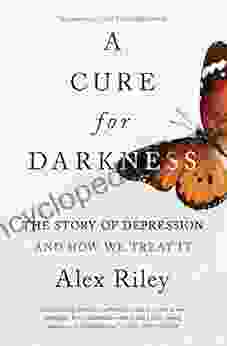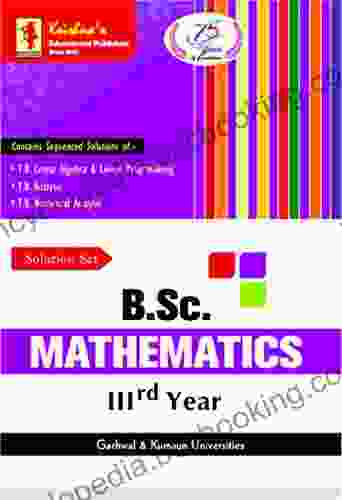Optically Induced Nanostructures: Unveiling the Convergence of Light and Matter for Biomedical and Technical Breakthroughs

In the realm of modern science and technology, the convergence of light and matter has opened up a new frontier of possibilities. Optically induced nanostructures, where light interacts with matter at the nanoscale, have emerged as a transformative technology with far-reaching applications in diverse fields.
4.1 out of 5
| Language | : | English |
| File size | : | 5238 KB |
| Text-to-Speech | : | Enabled |
| Enhanced typesetting | : | Enabled |
| Print length | : | 371 pages |
| Screen Reader | : | Supported |
This comprehensive exploration delves into the fascinating world of optically induced nanostructures, providing an in-depth analysis of their fundamentals, cutting-edge applications, and promising future prospects. By harnessing the unique properties of light, scientists and engineers are unlocking unprecedented opportunities to revolutionize biomedical treatments, enhance technical capabilities, and inspire novel technological innovations.
Fundamentals of Optically Induced Nanostructures
The foundation of optically induced nanostructures lies in the interaction between light and matter at the nanoscale. When light strikes a material, it can induce various physical and chemical changes, including the formation of nanostructures. These nanostructures possess unique optical properties that differ from the bulk material, enabling a wide range of applications.
Nanofabrication Techniques
Optically induced nanostructures are typically fabricated using advanced nanofabrication techniques, such as laser-induced forward-transfer (LIFT),photolithography, and femtosecond laser ablation. These techniques allow for precise control over the size, shape, and arrangement of nanostructures, ensuring optimal performance for specific applications.
Optical Properties
The optical properties of optically induced nanostructures are highly tunable, depending on their size, shape, and material composition. By manipulating these parameters, scientists can tailor the nanostructures' absorption, reflection, and scattering properties, enabling applications such as metamaterials, biosensors, and optical devices.
Biomedical Applications
Optically induced nanostructures have revolutionized the field of biomedicine, offering innovative solutions for disease diagnosis, treatment, and regenerative medicine.
Biosensors
The unique optical properties of nanostructures make them ideal for use as biosensors. By functionalizing nanostructures with specific biomolecules, such as antibodies or DNA probes, they can selectively detect and quantify target molecules in complex biological samples.
Drug Delivery
Nanostructures can serve as effective drug delivery vehicles, enabling targeted delivery of therapeutic agents to specific cells or tissues. The controlled release of drugs from nanostructures improves treatment efficacy and reduces side effects.
Medical Imaging
Optically induced nanostructures have enhanced medical imaging techniques, providing higher resolution and improved contrast. Nanoparticles can be injected into the body and used as contrast agents to enhance imaging of specific organs or tissues.
Tissue Engineering
Nanostructures are being explored for tissue engineering applications, where they can provide scaffolds for cell growth and differentiation. By mimicking the natural extracellular matrix, nanostructures support tissue regeneration and repair.
Technical Applications
Beyond biomedicine, optically induced nanostructures have found widespread applications in various technical fields, including optics, electronics, and energy.
Metamaterials
Nanostructures can be arranged to form metamaterials, which possess extraordinary optical properties not found in natural materials. Metamaterials enable the manipulation of light in unprecedented ways, leading to applications in cloaking devices, super-lenses, and optical sensors.
Photovoltaics
Optically induced nanostructures can enhance the efficiency of solar cells by increasing light absorption and reducing reflection. By optimizing the size and shape of nanostructures, scientists can improve the conversion of sunlight into electricity.
Optical Communication
Nanostructures can be used to manipulate and control light at the nanoscale, enabling advancements in optical communication. They can be integrated into optical fibers and devices to improve signal transmission speed and reduce losses.
Energy Harvesting
Nanostructures have shown promise for energy harvesting applications, where they can convert light into electrical energy. By exploiting the photoelectric effect, nanostructures can be used to generate electricity from sunlight or other light sources.
Future Prospects
The field of optically induced nanostructures is still in its early stages, but it holds immense potential for future breakthroughs. As research continues, we can expect to see even more innovative and groundbreaking applications emerge.
Advanced Nanofabrication Techniques
Advancements in nanofabrication techniques will enable the creation of more complex and sophisticated nanostructures with enhanced properties and functionalities.
Integration with Other Technologies
Optically induced nanostructures will be increasingly integrated with other emerging technologies, such as microfluidics, photonics, and artificial intelligence, leading to the development of novel devices and systems.
Biomedical Innovations
The continued exploration of nanostructures for biomedical applications promises to revolutionize disease diagnosis and treatment. Nanostructures may enable early disease detection, personalized therapies, and regenerative medicine breakthroughs.
Technical Advancements
The integration of nanostructures into technical applications will drive advancements in fields such as optics, electronics, and energy. Nanostructures may lead to the development of new materials, devices, and systems with unprecedented capabilities.
Optically induced nanostructures represent a transformative technology with the potential to reshape industries and improve human lives. By harnessing the unique properties of light, scientists and engineers are creating innovative materials and devices that are revolutionizing biomedical treatments, enhancing technical capabilities, and inspiring novel technological breakthroughs. As research continues, the future of optically induced nanostructures holds boundless possibilities, promising to shape the world in ways we can only imagine.
4.1 out of 5
| Language | : | English |
| File size | : | 5238 KB |
| Text-to-Speech | : | Enabled |
| Enhanced typesetting | : | Enabled |
| Print length | : | 371 pages |
| Screen Reader | : | Supported |
Do you want to contribute by writing guest posts on this blog?
Please contact us and send us a resume of previous articles that you have written.
 Book
Book Novel
Novel Page
Page Chapter
Chapter Text
Text Story
Story Genre
Genre Reader
Reader Library
Library Paperback
Paperback E-book
E-book Magazine
Magazine Newspaper
Newspaper Paragraph
Paragraph Sentence
Sentence Bookmark
Bookmark Shelf
Shelf Glossary
Glossary Bibliography
Bibliography Foreword
Foreword Preface
Preface Synopsis
Synopsis Annotation
Annotation Footnote
Footnote Manuscript
Manuscript Scroll
Scroll Codex
Codex Tome
Tome Bestseller
Bestseller Classics
Classics Library card
Library card Narrative
Narrative Biography
Biography Autobiography
Autobiography Memoir
Memoir Reference
Reference Encyclopedia
Encyclopedia 1st Edition
1st Edition Albert Grandolini
Albert Grandolini Agostine Ndungu
Agostine Ndungu Alan Sugar
Alan Sugar Albert Woodfox
Albert Woodfox 2007th Edition Kindle Edition
2007th Edition Kindle Edition Alan Bristow
Alan Bristow Al Barkow
Al Barkow A D Largie
A D Largie Adam Frankel
Adam Frankel A L Guion
A L Guion Achusim Michael
Achusim Michael Alan S Kaufman
Alan S Kaufman Adam Gower
Adam Gower Aaron Muller
Aaron Muller Adeyemi Jesutomisin
Adeyemi Jesutomisin A Sakyiama
A Sakyiama Albert Corbeto
Albert Corbeto Adrien Clautrier
Adrien Clautrier Al Columbia
Al Columbia
Light bulbAdvertise smarter! Our strategic ad space ensures maximum exposure. Reserve your spot today!

 Yukio MishimaUnlocking Global Success: Asian and European Experiences in International...
Yukio MishimaUnlocking Global Success: Asian and European Experiences in International... Dakota PowellFollow ·17.4k
Dakota PowellFollow ·17.4k Gabriel HayesFollow ·19k
Gabriel HayesFollow ·19k Marcus BellFollow ·15.9k
Marcus BellFollow ·15.9k Ian McEwanFollow ·7.2k
Ian McEwanFollow ·7.2k Griffin MitchellFollow ·16.4k
Griffin MitchellFollow ·16.4k Fredrick CoxFollow ·4.7k
Fredrick CoxFollow ·4.7k Jim CoxFollow ·9.4k
Jim CoxFollow ·9.4k Lawrence BellFollow ·3.4k
Lawrence BellFollow ·3.4k

 Francis Turner
Francis TurnerArt and Politics in the Shadow of Music
Music has...

 Jaylen Mitchell
Jaylen MitchellHow Algorithms Are Rewriting The Rules Of Work
The workplace is...

 Chandler Ward
Chandler WardRio de Janeiro & Minas Gerais Footprint Handbooks:...
Embark on an extraordinary adventure through...

 David Mitchell
David MitchellThe Story of Depression: Understanding and Treating a...
Delving into the Shadows of...

 Al Foster
Al FosterStatistics Done Wrong: The Woefully Complete Guide
Tired of being...

 DeShawn Powell
DeShawn PowellJulia Child's Second Act: A Tale of Triumph,...
Julia Child is an...
4.1 out of 5
| Language | : | English |
| File size | : | 5238 KB |
| Text-to-Speech | : | Enabled |
| Enhanced typesetting | : | Enabled |
| Print length | : | 371 pages |
| Screen Reader | : | Supported |










